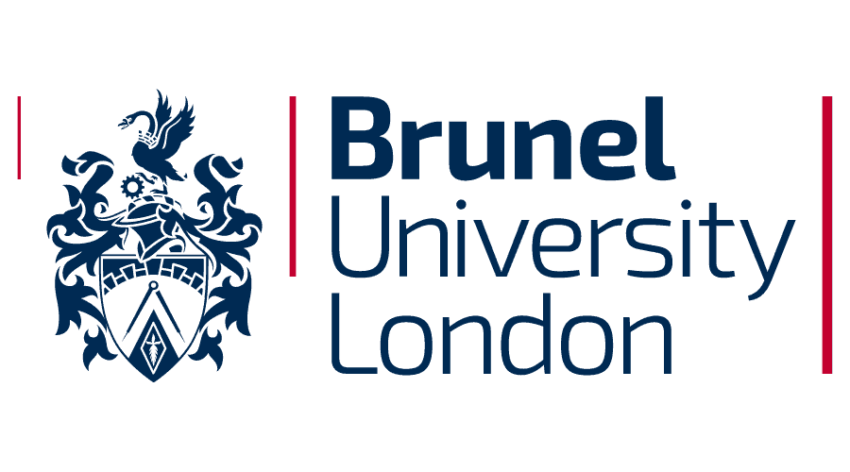Nearly two-thirds of staff in higher education are unhappy with the level of support they receive from employers. Many HE staff face issues with their workload, with some staff working an average of 50 hours per week [1]. In response to these demands, senior management is working to develop solutions and strategies to support staff.
Brunel University London
The Workplace Allocation Model (WAM) has been in place at Brunel University since 2015. Its key aims are to support staff wellbeing, and promote a more balanced workload, spread evenly within departments. By taking an active approach to reducing staff workload, the university hopes to improve staff wellbeing.

Workplace Allocation Models have previously been viewed as a performance management tool to monitor staff. By keeping the project within strategic planning, Brunel has used WAMs as a planning tool rather than a tool for oversight. This has helped build trust and encourage staff engagement with the project.
We spoke to Erica Moses Neacy, WAM Project Manager at Brunel about the impact WAM has had on the university.
MGC: Could you tell us about the Workplace Allocation Model in place at Brunel University?
Erica: We started the project in 2016, launching the pilot and running it with just a few select departments. In the pilot, we tried to make sure we included people from each of our three colleges to get an idea of how we would want to develop the system, what calculations were needed and what activities had to be included in the model. In addition to this, from the offset, we made sure to involve Union representation, as well as HR colleagues and senior management to understand the requirements of the model.
The full model was put into place and rolled out across the university in 2018. This started with a retrospective allocation of workloads from the 18/19 academic year. Obviously, before this, it had started in 2016, but this was just so we could have a basic understanding of the model itself. This understanding meant that it was easier to try and get everyone to start using the system after the full rollout. Despite this, from the beginning engagement was quite slow and transitioning to getting everyone using the system took time. Even now for the 2022/23 academic year, there are still some departments that aren’t fully engaged with the model, but essentially the system is in place across the whole of the institution.
The way that we’ve broken it down is that we’re including all areas and aspects of academic work in the model. We cut the work into four main categories: the teaching aspects of academic work, leadership and management and administration, the external engagement activities, and then your research and scholarship. And that is deliberately outlined in that way because it works towards the way that our academic promotions are set up so that you can make sure you’ve got the right balance when you are going for your promotion. It’s kind of quite neatly fits into those categories.

MGC: How has the Workplace Allocation Model improved staff wellbeing and satisfaction at the university?
Erica: We haven’t been able to conduct any surveys yet so all of our feedback is based on anecdotal remarks and word of mouth. One aspect we can monitor is that we’re seeing a better balance between all four areas of focus for staff. This means staff are getting the time to do things they want to do which can progress their career and enhance their experience working in academia.
The other aspect we’ve heard is that people are feeling more confident to say no to jobs that would increase their workload. Staff have their workload assigned to them and if they’re being asked to be put on a new leadership role and it’s not necessarily something they have the time to do, more now have the confidence to say no.
This is inadvertently linked to staff wellbeing as the model has made them feel more empowered to say no. Before where we might have seen excessive workloads and unhappy staff as a result, we are not seeing this now. Instead, staff are able to have a more balanced workload so they can allocate more time to their own research since the model creates a balanced workload across departments.
This feedback is great so far, but I suspect in time the university will want to do an internal survey to receive official feedback. I know our unions have done a survey, but it wasn’t around staff wellbeing and focussed more on the implementation and rollout of the model.
MGC: How has the model helped to support staff needs?
Erica: It’s opened up lines of communication more between the line manager and the members of staff in their departments. It allows them to actually have proper evidence, of what is occurring or at least what the intention is with the allocation of workloads. The intention is to ensure that everybody’s got the type of workload that they need to support their career and that they’ve got the time to be able to support whatever it needs they need to do to be part of that Institute they need.
It’s being able to balance unforeseen departmental changes within the next academic year or even the next term, and ensuring these changes don’t impact staff wellbeing regarding their workload. If colleagues are off, managers still need to communicate with their staff covering the extra work to ensure that colleagues are getting the time they need to complete both what they need to do as part of their active role and what they want to do.
MGC: What was the impact of the Covid-19 pandemic on the project? Did management systems need to adapt to meet the demands of hybrid working?
Erica: I think in some ways there was a lot of lecturers who were already recording their lectures and doing things online, so we didn’t need to change the system that much. There were some that might have given a provision of time, extra time for anything that was affected by the pandemic, like prep time, for example, trying to move to online.
The pandemic did have an impact on the project in the sense that where we might have seen a bit more engagement and embedding of it in the actual system, it actually slowed down in implementation. Understandably, priorities went elsewhere to help other departments as we hadn’t fully implemented by the time the pandemic hit. We’re still trying to catch up now, on that engagement side and making sure we’re getting the most out of having a completely online system.
MGC: How have staff adapted to sharing workload evenly across departments?
Erica: We haven’t moved to full transparency yet where all staff are able to see what their workload is in relation to colleagues, but managers are able to see everyone’s workloads. From that perspective, that’s where you can evaluate if there is a balance between all of our staff members and the types of work they’re doing. Is there anybody that’s quite heavy on the admin side? Is there anyone that’s quite heavy on the teaching side? These are the questions we need to try and understand staff workloads and to make departments fairer.
There might be reasons for why people might be doing slightly less teaching or they might have research grants which might take them out of teaching. This is all considered in the model with the charts and tables which provide managers with the information they need.
MGC: How has the project improved reviews of staff and student recruitment?
Erica: In terms of staff recruitment, what we like to do is sort of pull off a capacity report so you can see whether you’ve got a department that is at full capacity because we’ve got a threshold of 90% workload allocation. So that doesn’t mean, we stop allocating once we hit 90%. The ideal situation, which doesn’t occur very frequently, is that everyone’s at 90% capacity so you have room for things to go wrong and things to shift around. So if we’ve got individuals or a Department that is over that threshold, they’re able to use that sort of information to support their business case for recruitment.
In terms of student recruitment, that sort of report works in a very similar way. If we wanted to increase our student numbers and recruit some more students for a particular year, can we actually support that with staff based on the model? It works both ways, all we have to do is ask ourselves some simple questions. Do we have the staff to be able to support those students? If we do want to increase those numbers then we’ve got the reports to share and a business case to recruit the staff in time for hopefully a bigger cohort of students.
MGC: What advice would you give to other universities wanting to create their own WAM project?
Erica: I’ll start by saying the model isn’t perfect and still definitely needs some improvements. Using it over the last few years, we’ve been able to identify some improvements needed in how we capture workload data for our model. […]Part of that is about putting information in already for staff and making sure that that data is quite robust, for example, knowing the number of contact hours on a module and not having academics waste time searching for that information when they’re looking at allocating workloads for staff. That’s one thing for other universities to bear in mind, what information you have in the system already so that it’s one less task for those that are actually allocating workload.
The bigger thing to consider is the communication and in particular, having the senior management on board supporting the model right from the beginning. I think not having their support can have a big adverse impact. If you are lucky and have academics who are keen to use a model then they need to have the backing of their senior managers to allow them the time and the capacity to actually implement it. I think for us it’s constant communication and making sure you’re giving the same message over and over and over again because it can get miscommunicated. Then you get a lot of myths around having these models so it’s about being very clear about what your intentions are and making sure you have that very early engagement from senior management academics and the unions in particular.
Key Takeaways
- Workplace Allocation Models can support so they can focus on their own research and career progression
- It is important to involve Senior Management in the implementation of WAM so they can understand how the model supports their staff
- More data needs to be collected, but WAM appears to reduce staff workload and improve their overall experience
[1] JISC, Student and Staff Wellbeing Report, (2021)
Register FREE to access 2 more articles
We hope you’ve enjoyed your first article on GE Insights. To access 2 more articles for free, register now to join the Government Events community.
(Use discount code CPWR50)




